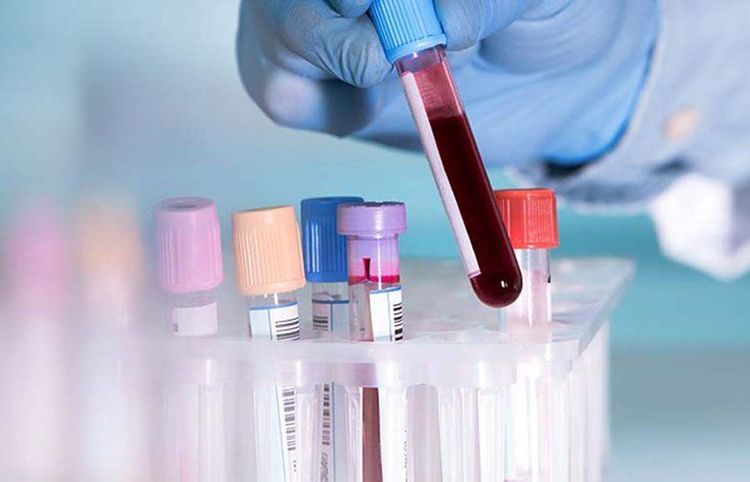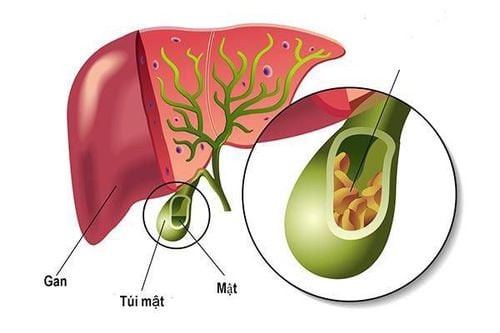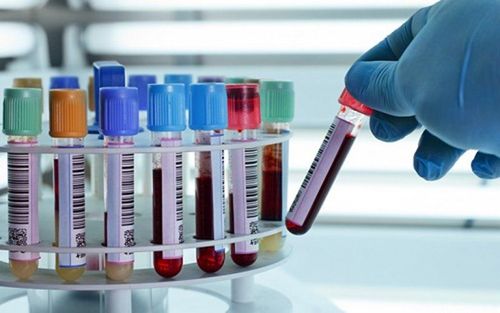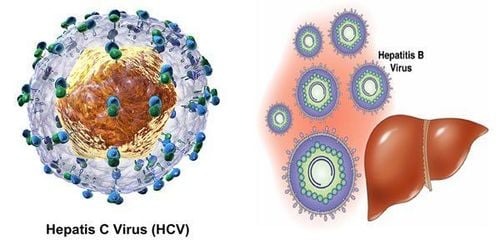This is an automatically translated article.
Hepatitis C is a disease caused by an RNA virus, transmitted mainly through injection. Diagnosis of acute hepatitis C is primarily through serological tests. What are the diagnostic criteria for acute hepatitis?
1. Overview of acute hepatitis C
In the United States, approximately 2000 cases of acute hepatitis C infection are reported annually. However, this number may not be accurate as there are many undetected or unreported cases. According to the US CDC, the number of infections is estimated to be closer to 30,000 per year.
Hepatitis C virus (HCV) is a flavivirus whose genetic structure is single-stranded RNA. HCV can cause acute hepatitis C and is a common cause of chronic viral hepatitis. Currently, up to 6 major subtypes of HCV exist with different genotypes (amino acid sequences). These subgroups differ in terms of epidemiology, toxicity, and response to treatment.
Besides, the hepatitis C virus has the ability to change its own gene structure (through amino acid sequence modification) over time in people who already have the disease and thereby create different mutant strains.
People who have been diagnosed with acute hepatitis C may have concomitant systemic disorders with an unspecified mechanism. Such disorders include:
Cryoglobulinemia mixed; Skin porphyria (about 60-80% of patients with porphyria are infected with HCV, but in contrast, the number of HCV-infected people with porphyria is very small); Glomerulonephritis . In addition, it is estimated that about 1⁄5 patients with alcoholic liver disease have HCV infection. The cause of this association is still not clear because patients use alcohol and drugs simultaneously (main route of transmission) accounts for a very small proportion. However, an issue that should be particularly noted is that in these patients, because of the synergism between HCV and alcohol, the degree of hepatitis is often more severe, the possibility of liver fibrosis is higher.

Xét nghiệm viêm gan C cấp tính có thể được chỉ định để sàng lọc những người có nguy cơ cao
2. Acute Hepatitis C Transmission
Hepatitis C virus is mainly transmitted through blood, often seen in people who inject drugs using shared needles. Others may have tattoos or piercings.
The ability to transmit hepatitis C through sex or from mother to child is relatively rare. In addition, the rate of hepatitis C virus transmission through blood transfusion is extremely low, especially since our country has applied the policy of testing and screening donated blood. A single person can transmit hepatitis C even though there are no obvious risk factors.
3. Clinical and laboratory symptoms of acute hepatitis C
Acute hepatitis C may not show obvious symptoms. Cases of fulminant hepatitis are very rare. Meanwhile, the severity of acute hepatitis C is often variable, sometimes there are cases of repeated hepatitis, liver aminotransferase levels change continuously for a long time.
HCV is the hepatitis virus with the highest rate of chronic progression (seen in about 75% of infected people). Patients diagnosed with chronic hepatitis C are mostly asymptomatic or have symptoms but are benign. However, a major complication is cirrhosis of the liver, which occurs in about 20 to 30% of cases.
Cirrhosis usually appears only after decades. In addition, hepatocellular carcinoma is another dangerous complication, but most are the consequences of cirrhosis due to HCV infection and very rarely in patients with chronic HCV infection without cirrhosis.
3.1. Symptoms of acute hepatitis C
Most cases of acute hepatitis C have no clinical symptoms or, if present, are nonspecific and are easily confused with other diseases such as body fatigue, anorexia, bloating, indigestion, pain. mild right upper quadrant, gastrointestinal disturbances, muscle pain...
Other signs suggestive of acute hepatitis C may include:
Jaundice, mild, sometimes subtle, yellowing of the conjunctival eye difficult to detect, may appear intermittently with fever and weight loss; Some extrahepatic manifestations include musculoskeletal, skin and mucosal, endocrine, renal, digestive, cardiovascular.
3.2. Testing for acute hepatitis C
Testing for acute hepatitis C may be ordered to screen people at high risk, including history of injecting drug use, surgery, blood transfusion, unprotected sex, cyclic dialysis, infants born to mothers infected with HCV. Tests used include hepatitis C virus anti-HCV antibody, HCV RNA quantification, and genotyping (to monitor and assess response to treatment).
4. Diagnosis of acute hepatitis C
Definitive diagnosis of acute hepatitis C must be through serological tests. Initially, viral hepatitis should be differentiated from other disorders that can cause jaundice. If in doubt, the following tests should be ordered to screen for hepatitis A, B and C viruses:
IgM antibodies to hepatitis A virus (IgM anti-HAV); Hepatitis B surface antigen (HBsAg); IgM antibodies against hepatitis B virus (IgM anti-HBc); Anti-HCV (anti-HCV) antibody and HCV-RNA measurement. In hepatitis C, serum anti-HCV may reflect chronic infection, previous infection, or acute infection and it should be noted that this antibody is not protective. When cases are unclear or suggestive of acute hepatitis C, the patient should be ordered to measure the HCV-RNA load. Anti-HCV antibodies usually appear in the serum late after the acute infection. Meanwhile, HCV-RNA testing is usually detected earlier.
Other tests:
Liver function tests, including liver enzymes ALT and AST, alkaline phosphatase and bilirubin; Several tests are done to assess the severity of acute hepatitis C such as: serum albumin test, platelet count, INR coagulation index. Diagnostic criteria for acute HCV hepatitis:
HCV-RNA positive, anti-HCV can be negative or positive: HCV-RNA can be positive 2 weeks after exposure to the virus, while anti-HCV appears appear late after about 8-12 weeks; Liver enzymes AST, ALT normal or slightly increased; For infected patients with disease duration less than 6 months, monitoring of seroconversion from anti-HCV negative to positive, with or without clinical symptoms, may be indicated.

Chẩn đoán xác định viêm gan C cấp tính phải thông qua các xét nghiệm huyết thanh học
5. Prevention of acute hepatitis C
Stay away from behaviors that have a high risk of HCV infection (such as sharing needles, tattoos, and piercings); Limit direct contact with blood and body fluids (such as saliva, semen) of people suspected of being infected. Protective measures are necessary, but patient isolation is of no value in the prevention of acute hepatitis C; Post-transfusion HCV transmission will be minimized when measures such as avoiding unnecessary blood transfusions, HBsAg and HCV screening for all blood donors are taken. This screening has reduced the incidence of post-transfusion hepatitis to about 1/100,000 transfused blood units; Currently, there is no vaccine for hepatitis C virus due to the tendency of HCV to change its genome, making vaccine development difficult.
Please dial HOTLINE for more information or register for an appointment HERE. Download MyVinmec app to make appointments faster and to manage your bookings easily.













